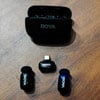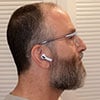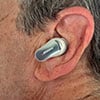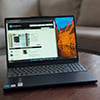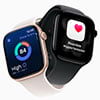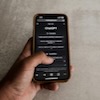If you’ve ever wished you could see directions, messages, or even live translations right in front of your eyes, Meta’s new Ray-Ban Display smart glasses might be the closest thing yet to that sci-fi dream. They pair the sleek design of classic Ray-Bans with an in-lens color display that appears only when you need it.
After trying them at a demo event in New York City, I came away both impressed with how close this setup comes to replacing some of the things I usually do on my phone and aware that this is still a first-generation product aimed at early adopters. At $799, they’re more than twice the price of my second-generation Ray-Ban Meta smart glasses, but they also do far more. Here’s what impressed me, what fell short, and whether you should consider buying them.

What I liked
Bright, clear in-lens display
The biggest leap forward is the full-color, in-lens display. It’s bright enough to see under harsh lighting and adaptive thanks to built-in Transitions lenses that automatically adjust to ambient light. With up to 5,000 nits of brightness, it’s among the brightest displays I’ve seen, high enough to be visible in sunshine.
The image looks sharp and vibrant, and unlike other smart glasses I’ve tried, there’s no telltale sign you’re looking at a screen. The 600 x 600-pixel display in the right lens provides a narrow 20-degree field of view, which feels just right for quick glances at information. I liked how naturally the display faded in and out, so it was there when I needed it and gone when I didn’t. Whether I was checking a message or glancing at directions, it felt surprisingly intuitive.
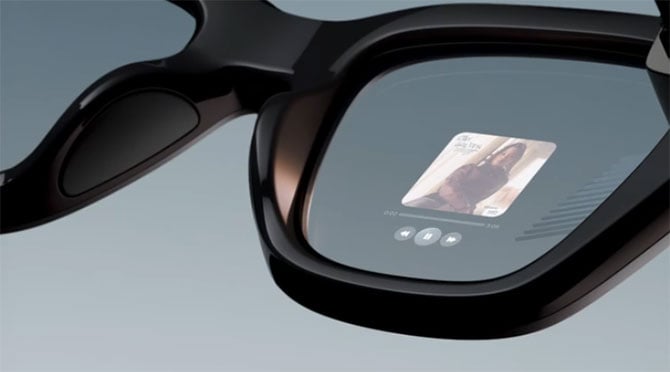
The Neural Band controller
The Neural Band, a slim wristband included with the glasses, translates subtle finger gestures into commands. A pinch between your index finger and thumb selects, a pinch with your middle finger returns to the home screen, and a double thumb tap activates Meta AI.
I was surprised by how little movement it requires. You don’t need to raise your hand or point in the air. I kept my hand relaxed by my side while navigating menus or scrolling through notifications with quiet finger taps. It took a few minutes to get used to, but once I did, the control felt natural and precise.
Hands-free camera control and framing
One of my biggest frustrations with my first-generation Meta Ray-Ban sunglasses is framing photos. It’s usually point, shoot, and hope for the best. The Display solves that by showing a live preview in the lens and letting you zoom in or out with a hand gesture before taking 12MP shots. This small but significant change makes capturing moments far easier and more enjoyable. You can also capture 3204 x 1920 video.
AI that is actually helpful
Meta AI on smart glasses has always been useful for identifying objects or translating text, but now it feels more natural. Instead of saying “Hey Meta,” I double-tapped my thumb onto my closed fist to activate the AI. With it, I could handle most of the tasks I normally do on my phone. I could start an audiobook or playlist, take a photo, make a WhatsApp video call, or scroll through responses directly in the display.
When I looked at a flower and asked what it was, the AI responded aloud and displayed the name and image right in my view. Not life-changing, but undeniably cool – and a glimpse of how on-the-spot contextual information could evolve.
The AI also handles live captioning and translation. During my demo, the glasses’ multi-directional microphones captioned only the person I was facing, filtering out background chatter. That could be transformative for people who are hard of hearing or struggle in noisy environments, as long as the wearer stays focused on the person talking.
Read more: Why Ray-Ban’s New Meta Smart Glasses Are Finally Worth the Upgrade
Everyday practicality
During my demo time with the glasses, I was able to do almost everything I’d expect to do with my phone, including taking calls, listening to music, replying to messages, checking social media, and getting turn-by-turn walking directions with arrows that update as you move. The display fades away as you walk and reappears only when it’s time to turn or change direction, so it’s never overwhelming.
What struck me most was how natural it felt. Instead of reaching for a phone or looking down at a smartwatch, I saw the information appear when I needed it, then quietly disappear. This feels like the beginning of a new way of interacting with technology: more ambient, less intrusive, and more human. The Ray-Ban Display glasses don’t replace your phone yet, but they hint at a future where we can get the information we need without being tethered to a phone.
What I didn’t like
Chunky design and limited sizing
While the technology is impressive, the design still has room for improvement. The glasses look stylish in photos, but big and chunky in person. They weigh about 69 grams, vs. the 52-gram Meta Ray-Ban Gen 2 glasses, and are available only in Black or Sand (a light brown color).
How they look really depends on who’s wearing them. On one person at the demo, the glasses looked fashion-forward and chic; on another, they completely dominated the face. The frames clearly need to house a lot of hardware, but multiple sizes would make them a better fit for more people. For now, they’re best suited to larger faces.
I also found the display’s placement a bit awkward. I had to glance slightly downward to read text or view notifications, and I often wished I could raise the image higher in my field of vision or enlarge it a bit. Anyone watching could tell I was looking away, which made the experience feel less natural and not seamless.
Battery life could be longer
Battery life is another concern. Meta estimates around six hours of mixed use, but that number drops quickly if you’re video calling or using AI features like live translation. The new fold-flat charging case is slimmer and easier to carry than the previous versions and can provide four extra charges on the go, but the glasses still fall short of true all-day wear.
The bottom line
Even with its bright display and intuitive Neural Band controls, the $799 Meta Ray-Ban Display glasses are best suited for people who love cutting-edge tech and don’t mind how they look in big, chunky glasses. They’re an exciting preview of where personal computing is headed, but the price and form factor make them hard to recommend for most people.
For most people curious about the Meta AI integration, the current Meta Ray-Ban Gen 2 glasses, which cost half as much and look more like traditional frames, will probably make more sense right now.
Read next: I Tried Samsung’s Galaxy XR and Still Don’t Know Why Anyone Needs It
[Image credit: Andrea Smith/Techlicious, Meta]

